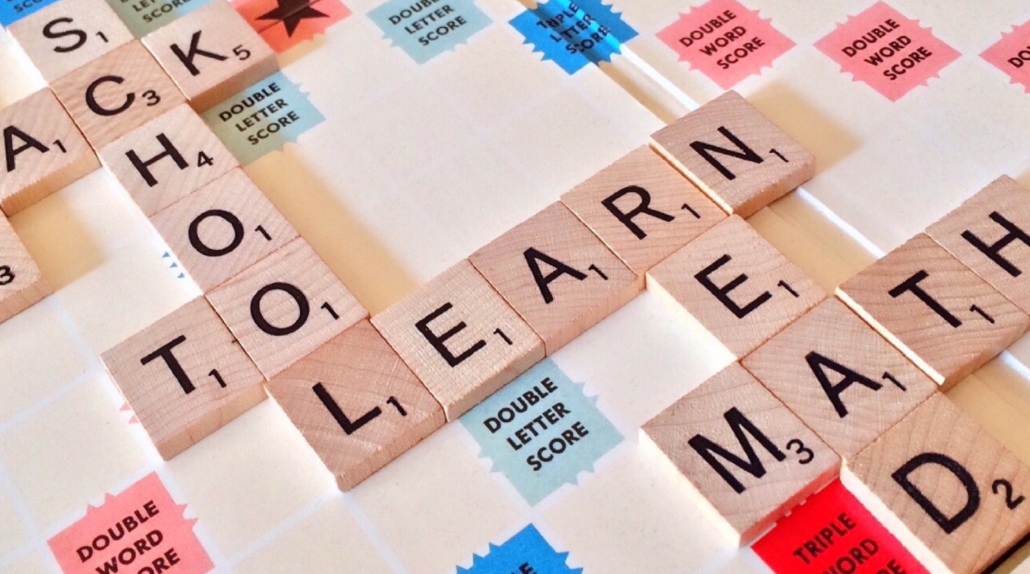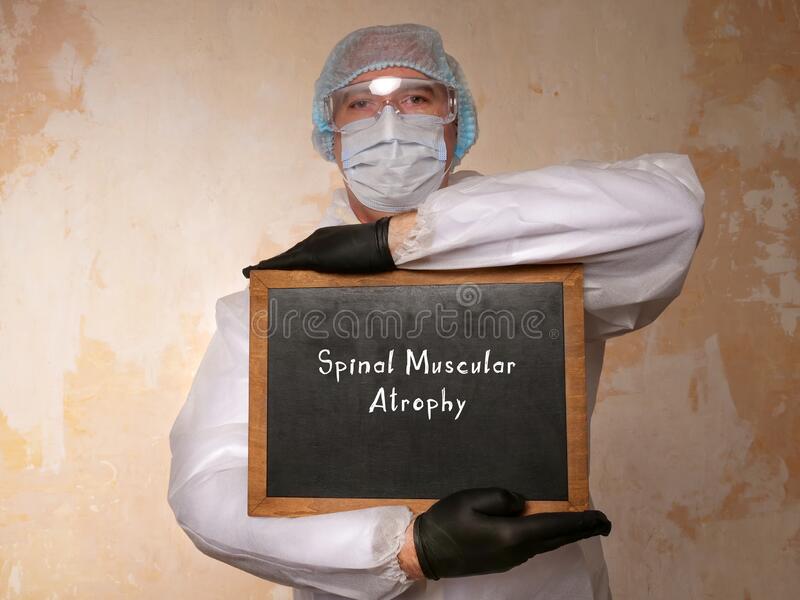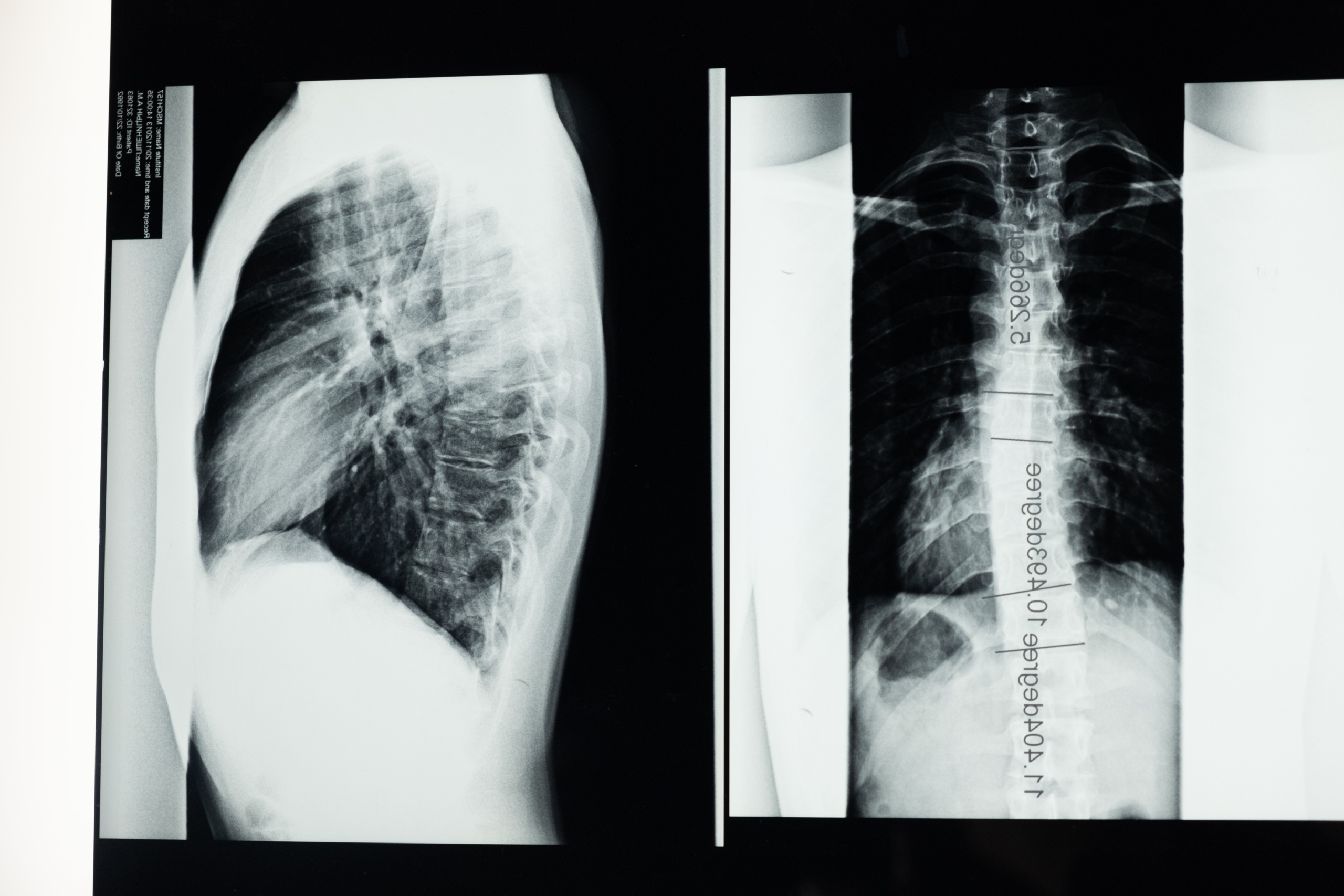

- Call 908 543 4390
- Email
- Dr.Joni Redlich PT,DPT



Keep Your Home and School Life Calmer this Back to School Season
It seems to happen every year. One minute we are barbequing, lounging in the pool, camping, going to the beach or on fun day trips, perhaps even on a long anticipated vacation, and then, BAM! The scene changes drastically: stores are merchandising Fall, as in Pumpkin Spice Everything, Halloween decor and Back to School items galore! For kids it can be jarring to be staring at the reality of returning to a more structured routine, but it can be equally disconcerting for parents, especially if there are unknown factors regarding the school experience or their students’ potential reaction to a new school year. Couple this with the uncertainties of the last 2.5 years of life and stress all around can start to grow.
First, let’s breathe. With a bit of planning ahead, organization, and tips from some experts, we CAN put a positive spin on the experience of preparing for Back To School activities. Whether this is your first year of having a child in school or your tenth year, every new experience i.e. start of a new school year, is going to have some similarities and differences to the ones that preceded it. Hopefully, this guide has something that parents with different types of experiences can find helpful. Let’s Do This!
Walking through the school before the school year starts can reduce both child and parent nerves, as you know what to expect and where things are. If possible, look at the child’s actual classroom. Finding key places like the bathrooms, auditorium, nurse’s office, and gym can calm some jitters about getting lost. Remind your kids that it is ok to have to ask for directions!
If your child has any accommodations (think 504 Plan or IEP), review what educational goals have been met, and any remaining challenges. Before school starts (or soon thereafter) reach out to schedule a team meeting, to talk about what was effective last year and what goals you’ll focus on this year. This can be a time to update the team on any new achievements or challenges that may prompt revisions to plans.
You know your child best, including their biggest organizational challenges. It’s better to strategize potential solutions before or soon after classes begin. Together ( if your kiddo is amenable), browse an office supply store, dollar store, Walmart, Target or websites like Amazon and see what type of systems designed for organizing papers, supplies, and time, might best fit their needs. Pick options that are simple enough to work both at school and at home. For example, if losing homework is a known issue, consider pocket folders and label them for work to do on the left, finished work on the right. Can’t find books in their locker? A locker shelf and encouragement to organize books according to the daily class schedule might do the trick.
If your child is in one classroom all day, knowing how the day/week will be structured and what it will consist of can offer a sense of security. If they are switching classrooms, ask them if they know where all listed classrooms are located.
Pick a spot close to the door and stock it with things like open cubbies/shelving, baskets, and/or hooks. This should be “HOME BASE” for items like books, homework, backpack, notes, sports/activity bags/equipment, keys, lunches, and other school-related articles. Hang a large whiteboard to help her remember tasks and items. Consider setting timers to help get kids and parents out the door on time. Old school Dollar Store wind up timers are one great option that keeps everyone off their phones.
It is tempting to skim over the endless number of emails, website links, videos, online sign ups, and even papers that your students school sends you. Sure some of it may involve signing up to be a chaperone at a dance or volunteer for the Holiday Market, BUT there is also crucial information that can be buried in the parade of documents. Schedules, calendars, classroom policies and signups for important events can be missed. Trust me on this- you don’t want to be the ONLY parent who misses the Meet the New Class Goldfish Tea.
There are oodles of resources out there to help parents manage and control all aspects of the Back to School journey. Here are a few we found that we thought were nifty, helpful and worthy of sharing. Don’t be afraid to try new techniques to manage your family’s back to school schedule. You can reach out to other parents (IRL, through online groups, or by reading blog info online) to find out what worked for them for a particular challenge you are facing. But ultimately, it’s YOUR FAMILY, YOUR SOLUTIONS. We are rooting for you and you kids to have a sane, successful and super start to the school year!
Note: we have no affiliation with and get no incentive from any of the websites or products we list.
At happymomhacks.com website, a busy mom shares checklists she created with what kids need to bring to school and for after-school activities, as well as easy DIY homework stations & backpack storage ideas https://happymomhacks.com/how-to-be-organized/
Start the school year off right! Download this free book of invaluable back-to-school tools, and get more school and learning help from ADDitude via email.
Magnetic whiteboard for family organization:
Clothes Organization
No Hassle Shoe Tying
For Easier Wake Ups- Sunrise Alarm Clock
Keep Art and Keepsake Papers organized
Visual Time Tracker for Homework or Chores
REFERENCES:

Here at KidPT, we treat kids with many different forms of disabilities, and we hear all the time how tricky it is to find places that are accessible and disability friendly for quick, family fun getaways. To help fill all your kiddo’s weekend fun needs, we thought we would compile a list of disability friendly travel destinations within driving distance that have been visited and approved by families with adults or children with disabilities.
Looking to travel close by? Try some of these disability friendly destinations located within driving distance of New Jersey for a weekend getaway or short vacation!
Washington DC is the city where the Americans with Disabilities Act was passed and made a law and how fitting that it is such an accessible city! Nearly all of its attractions, shops, and restaurants are wheelchair accessible. This includes the National Zoo, Capitol Building, Lincoln Memorial, all the Smithsonian Museums, the Washington Monument, and other famous landmarks across the city. The metro is also wheelchair accessible and a very easy way to explore the city, you can roll into the metro with ease and then take an elevator to get to the metro lines. The city is also mandated to make all taxis wheelchair accessible too, which will open up even more possibilities for traveling throughout the city. See below for a great guide to all the wheelchair accessible locations throughout the city.
https://magazine.trivago.com/the-ultimate-accessibility-guide-to-washington-dc/
Shenandoah National Park is beautiful and full of nature AND has wheelchair accessible trails. Two of the accsssible trails of note are the Limberlost Trail and the Rose River trail, which are both smooth and offer stunning landscape views.
https://www.nps.gov/shen/planyourvisit/accessibility.htm
The Sesame Place is an amazing theme park for kids with many different needs. It is based on every kids favorite television show, Sesame World, and offers theme park rides, water rides, and shows and parades too. One of the real benefits of the Sesame Place is that it is also a Certified Autism Center (CAC), and was the first theme park to earn this designation. Plus, it is wheelchair accessible too. Upon entering the park, they offer a “Ride Accessiblility Program” questionnaire that will let you know which attractions will fit your family’s needs the best.
https://sesameplace.com/philadelphia/
Smugglers’ notch has many options for the whole family, like various fun camp activities and options, many fun pools to choose from, and most importantly, the Smugglers’ Notch Adaptive Program (SNAP). SNAP features many adaptive activities for kids, such as Arts and Crafts, guided hiking, kayaking, mini golf, Nature time, S.T.E.M activities, Swimming and Adaptive Swimming Lessons, and Waterslide activities. The mountain environment is also very relaxing for parents, with nice mountainside condos available.
https://www.smuggs.com/pages/summer/kids/adaptive_programs.php
Legoland is a special needs-friendly and wheelchair accessible theme park that any lego lover is sure to fall in love with! They also offer a list of recommended attractions depending on your child’s disability, and there are many wheelchair accessible attractions throughout the theme park! Most of their rides and attractions are wheelchair accessible, like DJs Dizzy Disco Spin, Merlin’s Flying Machine, The Dragon, and so many more!
https://www.legoland.com/new-york/plan-your-visit/know-before-you-go/special-situations/
Resources:
https://parade.com/1002319/marynliles/handicap-vacations/
https://enablingdevices.com/blog/best-vacation-spots-handicap-access/
https://blog.cheapism.com/wheelchair-accessible-vacations/
https://www.gorving.com/tips-inspiration/expert-/10-most-accessible-places-visit-us

The Summer Is A Magical Time For Childhood.
It allows an increased opportunity for outdoor play, creativity, exploration of new environments, unstructured social interactions with peers, and travel to new places via day trips or family vacations.
Whether your child spends more time outdoors with neighborhood friends, experiences nature at camp, ventures to the park with the family, goes on rides at amusement parks or carnivals, plays in the sand at the beach, goes tubing or boating, bikes around the block, splashes in the sprinklers or a pool, creates with chalk masterpieces on the driveway, or camps in the woods; your child is in a sensory wonderland.
All these experiences provide your child with significant opportunities for movement and diverse sensory experiences that are so important to help develop their sensory integration systems and gross motor skills and promote self- regulation.
No Wonder it is a challenge to transition from this sensory and movement rich environment back to the classroom where our children are expected to sit still and focus on their academic curriculum.
That’s why we have compiled this Back to School Movement List. These items may help if your child has an especially challenging time with this transition by incorporating both movement and sensory activities into the school environment in a classroom friendly way. These movement and sensory outlets promote a calm demeanor and an enhanced ability to focus and concentrate so that our kiddos are ready to learn about our crazy, cool world.
If your kid is: always wiggling, shifting, rocking in, or getting out of their chair or sitting with slouched posture.
How it helps: Improves posture, promotes active sitting, activates the core for improved postural stability, and provides proprioception and body awareness.,
If your kid is: often tapping their feet on the floor, pushing the top of their feet into the ground or the legs of the desk, wrapping their feet behind the legs of their chair, wiggling in their chair, getting out of their chair, distracted, anxious, or sitting with slouched posture.
How it helps: Provides proprioception and body awareness, lower limb movement, deep pressure and joint compression with rebound of the band, resistance for hard work which can be grounding for your child.
If your kid is: always chewing on their pencils, biting their nails, gnawing on their shirt/clothes, anxious, distracted, clenching their jaw, or grinding their teeth.
How it helps: deep pressure input, movement and heavy work of the jaw, activation of muscles in jaw and neck which promotes improved postural stability, proprioception and body awareness,
If your kid is: often tapping their feet on the floor, pushing the top of their feet into the ground or the legs of the desk, wrapping their feet behind their chair legs, wiggling in their chair, getting out of their chair, distracted, anxious, or sitting with slouched posture.
How it helps: Provides proprioception and body awareness, lower limb movement, resistance for hard work, deep pressure input, and exploration of texture with the choice of the smooth or bumpy surface.
If your kid is: often fidgeting in their chair, playing with their hair, distracted, anxious, getting out of their chair, talking excessively in class, clenching their hands, picking at their skin, or tapping their fingers or pencils on the desk.
How it helps: Provides proprioception and body awareness, movement, resistance, exploration of texture, an outlet for restlessness, and activation of hand, arm, and shoulder muscles.
This is not an exhaustive list and there is no such thing as one size fits all. Consider the strengths, sensory preferences, and movement needs of your child. If you need help navigating what your child’s needs are, try booking an occupational therapy consultation near you. The summer is not over yet, so keep basking in the sensory and movement wonderland.
Spinal muscular atrophy (SMA) is a genetic disease that affects the central nervous system, peripheral nervous system, and voluntary muscle movement (skeletal muscle). A majority of nerve cells that control muscles are located in the spinal cord. SMA primarily affects muscles, because they don’t receive signals from specific nerve cells, called motor neurons. When muscles aren’t stimulated by nerve cells, they get smaller or atrophy. Because SMA involves the loss of nerve cells called motor neurons in the spinal cord, it is classified as a motor neuron disease.
Degree of motor function decrease is roughly correlated to the age at which SMA symptoms start. Generally, kids who have symptoms at birth or in infancy usually have the lowest level of functioning (type 1). As a rule, later-onset SMA with a less severe course (types 2 and 3, and in teens or adults, type 4) corresponds with progressively higher levels of motor function.
Chromosome 5 SMA is caused by a deficiency of a motor neuron protein called SMN, for “survival of motor neurons”, which appears necessary for normal motor neuron function. SMN has a crucial role for gene expression in motor neurons.

The scope of SMA symptoms are broad, and symptoms range from mild to severe. Typically the “proximal” muscles (closer to the center of the body) are the most affected in the body. SMN-related SMA presents with weakness of the voluntary muscles as a primary symptom and often include shoulders, hips, thighs, and upper back. Lower limbs seem to be more than upper limbs, and there is a decrease in deep tendon reflexes. If the muscles used for breathing or swallowing are impacted, there may be complications with those functions. Similarly, back muscles weakening may result in development of spinal curvatures.
Recently, there have been exciting treatments for various types of SMA that have been complete game changers for individuals who have the disease. Current research strategies have focused on increasing the body’s production of the SMN protein that’s lacking in the chromosome 5-related forms of SMA. Methods include approaches to increase motor neuron survival in adverse circumstances.
The Food and Drug Administration (FDA) approved Spinraza (nusinersen) for the treatment of SMA, on Dec. 23, 2016. Spinraza is designed to treat the underlying defect in SMA, meaning it potentially might be effective at slowing, stopping, or possibly reversing the symptoms of SMA.
In May 2019, the FDA approved Zolgensma (onasemnogene abeparvovac-xioi), which represents the first gene-replacement therapy for a neuromuscular disease. Zolgensma is a one-time intravenous infusion, and is used to treat pediatric patients younger than 2 years of age with SMA, who exhibit bi-allelic mutations in the SMN1 gene. This includes those who are presymptomatic at diagnosis. Read more information at: FDA Approves AveXis’ Zolgensma for Treatment of Spinal Muscular Atrophy in Pediatric Patients.
Additionally, the FDA approved risdiplam (brand name Evrysdi) in August 2020, for the treatment of SMA in adults and children two months of age or older. It is an oral medication that functions to raise SMN protein levels, by boosting production from the SMN2 “backup” gene.
For a detailed and simple-to understand overview of SMA, visit the Muscular Dystrophy Association website for the SMA fact sheet at:
https://www.mda.org/sites/default/files/2020/11/MDA_SMA_Fact_Sheet_Nov_2020.pdf
Currently, one of the best known people with SMA is Shane Burcaw. Shane has been affected by SMA most of his life, yet it doesn’t define him fully or keep him from living a productive life as a disability advocate, speaker and author. Together with his wife, Hannah, they run a popular YouTube channel ,“Squirmy and Grubs” and share their relationship story with the world, with the hope to change the way society thinks about disability.
The link below is a video on the channel where Shane talks about his diagnosis and early life. It also showcases the amazing relationship he and his wife share.

The CDC put out new milestone guidance for families and crawling was removed as a milestone. This decision led to a lot of uproar in the pediatric physical therapy and occupational therapy world and a lot of confusion for parents! Let’s have a conversation in this blog post about crawling and whether it is still important for us to consider.
First off, let’s consider the guidelines put out to parents and healthcare professionals. The developmental monitoring guidance, which is designed for parents to have a quick way to see if their child’s development is on track, no longer includes crawling as a milestone.
This does NOT change child development, developmental screening, or developmental evaluations. Developmental screenings are recommended to be done at 9, 18, and 30 months of age. Additionally, Autism Screening is recommended at 18 and 24 months of age. Any concerns about a child’s development will lead to a developmental evaluation, which looks more in depth at a child’s development.
Developmental screenings and evaluations will continue to include crawling as a milestone. Given that, we can include that crawling continues to be a milestone and one that is important to address.

In many ways crawling represents freedom. Crawling is usually the first time a baby can actively explore their environment, versus someone having to carry them from point A to point B. Babies also gain a sense of independence from their parent or caregiver, as they move away from them and then move back.
When babies bear weight on their arms, they develop shoulder stability and they develop the arches of the hands, which helps later on with handwriting and fine motor skills. Crawling also helps develop vision skills and gives babies important sensory feedback, from stimulating the vestibular system while moving in space, gives information to the touch receptors on the hands, legs and feet, and gives proprioceptive information from the joints and muscles. This sensory feedback helps babies develop spatial awareness, or the sense of where their body is in space.
Finally, crawling helps develop core stability and coordination, because you’re using your opposite arm and leg at the same time, along with moving in a rhythmic manner.
All of these components work together as the baby learns to control their bodies against gravity at this new level.

The most important thing parents that do to support their babies development is to have lots of floor time, without the use of supports, so that baby can explore.
Babies need to move against gravity, and see, by trial and error, when I reach for that toy, what happens? A lot of times they start moving by a happy accident, like they lean one way to get something and they roll over. If they don’t have those opportunities, those happy accidents can’t happen.
When the baby is on the floor, encourage them to move by putting toys slightly out of reach. As parents, having the patience to let them go through that trial and error process and not jump in can be so hard, and sometimes even I have to sit on my own hands.
The transitions babies do over and over again during play, moving from sitting to belly and back to sitting, from sitting to hands and knees to sitting again, is what gets their little bodies truly ready for crawling. They move in and out of positions, getting their core muscles primed to support them on hands and knees.

Many babies will crawl in a typical all fours pattern, but there are so many variations too. Some babies will first commando or army crawl before getting up on hands and knees. This is where we often see lots of different variations and asymmetries. Some babies will do lot of pulling with their arms and some will always push off with the same leg. I generally tell parents not to worry about funny looking army crawl patterns. It will work itself out when the babies are on hands and knees crawling and moving in a much more symmetrical and synchronized way.
Some babies will bear crawl, where the legs are kept straight. This often happens when the baby is avoiding hard floors! As long as you’re seeing lots of variety of movement patterns during play, this isn’t concerning.
Crab crawl: Baby moves with either one or both legs tucked under. This is another common variation. Its often due to asymmetries in the pelvis and hips, but it can also just be a normal variation.
Bottom scoot: Baby uses hands to push across the floor while sitting upright on their bottom. Some babies don’t go onto hands and knees at all and will get around on their bottoms. If baby is choosing this method of mobility, keep an eye out for how they are figuring out how to pull up to standing so that they are able to get to the next stages of development on the road to walking. My favorite activity to introduce to bottom scooters is climbing up the stairs- you can’t pull that off with a bottom scoot!
Crawling backwards: many babies will crawl backwards before figuring out how to crawl forwards; if you see your baby crawling backwards, just enjoy the process and watch them problem solve and figure out how to change directions; they’re almost there!

Babies will learn to crawl on hands and knees between 8-10 months of age. Like every milestone baby works towards, there are many small steps that add up to the big achievement of the milestone. If a baby is able to do all the steps up to crawling, such as moving from sitting to hands and knees and rocking on hands and knees, they’re on their way.
Some signs baby may need some help with their gross motor development:
At Kid PT we offer developmental screenings to local families who have questions or concerns about their children’s development. I tell parents that at that screening you will either get peace of mind that there aren’t any concerns or they’ll get recommendations as to how to help their child and support their development. Its a win-win!
To schedule a Developmental Screening, call/text us at 908-543-4390 or email info@kidpt.com.
What happens when your child is ill?
Have you ever thought you were going crazy when it came to your kids? Sure, we all get stressed out by the demands parenting requires of us whether they be mundane, daily happenings (“No you can’t have another cookie!”, “Stop teasing your brother!”) or extreme, unlikely circumstances (Hello pandemic-looking at you!)
But, what if there was something wrong with your child, (who also happens to have neurodevelopmental delays or another neurodivergent diagnosis) and no experts had any answers for you? What if you took your kiddo to all the “BEST” doctors out there and they either had no answers, their diagnosis conflicted with one another, or worst of all, they just didn’t believe your child had a problem?
Misdiagnosis happens.
I am here to tell you that it happens. And when it is your child who is struggling and suffering, it is exquisitely painful. You feel like you are living in a nightmare that you simply cannot wake from and that somehow, those around you are seeing a distorted view of reality. A 2019 article* states that, “the mindset that young children are rarely seriously ill is one of the main reasons that they are more likely to be misdiagnosed than adults are. That’s on top of all of the ways that approximately 10 percent of American adults are misdiagnosed every year. When doctors and nurses expect to see a healthy child with a common short-lived illness, they may miss the uncommon ones.”
The article goes on to list the main reasons for children receiving a diagnosis that’s wrong or delayed:
Experts may give you the brush off.
However, there are cases where a parent’s concerns are dismissed, as I was when my daughter presented with a long, puzzling, seemingly unrelated laundry list of symptoms that spanned years, nearly a decade by the time a diagnosis was finally rendered. During that time period, I was given advice from some well-meaning individuals who said things like:
Did any of this help my daughter get better or me find answers? That would be a resounding no. Oh, and by the way, that last piece of “advice” above was given to me, in front of my child, by a supposedly well-respected doctor. He dismissed all the hundreds of pages of tests, scans, medical records and prior diagnosis, didn’t help my daughter, and charged for it!
So what DO YOU DO? You don’t give up- you trust your gut! Parents know their children best and what their “normal” looks like, even if it doesn’t match the textbook image. Remember to believe in yourself and your ability to help your child. Make a bulleted list of every symptom, even if it does not seem totally related, and the date the symptom started. Research the heck out of your child’s symptoms and any test results you have, using the best and most trusted resources you can find. Become well acquainted with clinical research papers, societies for various branches of disease types ( think brain, stomach, nervous system, etc.) Join an online group for other parents who may be seeking answers for their child or who may have information to share.
The Society to Improve Diagnosis in Medicine says not to get overwhelmed by the risks of misdiagnosis. Rather, recognize there are a few key things to do, to assist in getting an accurate and (hopefully) prompt diagnosis. These tips also help if your child is in the middle of a diagnostic journey today.
In closing, you, as a parent, are the most trusted authority on your child. If you feel that something is wrong with your child and it is not getting resolved, don’t be afraid to speak up. Your child and your family deserve answers and the best possible care. Be brave and know that what your GUT is telling you, may be right. (If you have a question for Melanie (author/Kid PT Marketing) email her at info@kidpt.com)
*References
Hi all! We know June for being the last month of school and the month where summer fun begins, BUT did you know June is also Scoliosis Awareness Month? Yes! June is the month where we highlight Scoliosis, a diagnosis that affects so many kiddos (and adultos☺️) across the world. So, for Scoliosis Awareness Month, we wanted to bring you all some information about Scoliosis, what it is, and how Physical Therapy can help!
 Scoliosis is a diagnosis that involves a curvature of the spine, the bones that run along the middle of your back. If a child is affected with scoliosis, as they grow, their spine will begin to curve in either the cervical, thoracic, or lumbar spinal regions, aka the neck, upper back and lower back regions. Changes in the spine’s natural anatomy create imbalances in the body that may cause your child’s shoulders, shoulder blades, hips, or ribs to look unlevel or uneven. It may also cause their spine to appear curved when bending forward, may affect their overall mobility, and may create back pain later in life if left untreated. If a child’s scoliosis is very severe, it can also affect the shape and growth of their internal organs, like the lungs or the heart.
Scoliosis is a diagnosis that involves a curvature of the spine, the bones that run along the middle of your back. If a child is affected with scoliosis, as they grow, their spine will begin to curve in either the cervical, thoracic, or lumbar spinal regions, aka the neck, upper back and lower back regions. Changes in the spine’s natural anatomy create imbalances in the body that may cause your child’s shoulders, shoulder blades, hips, or ribs to look unlevel or uneven. It may also cause their spine to appear curved when bending forward, may affect their overall mobility, and may create back pain later in life if left untreated. If a child’s scoliosis is very severe, it can also affect the shape and growth of their internal organs, like the lungs or the heart.
There are four different types of scoliosis: idiopathic, neuromuscular, congenital and degenerative. Degenerative scoliosis is often diagnosed above the age of 65 due to normal wear and tear on the spine and surrounding joints. Congenital scoliosis occurs as a result of spinal or rib deformities present at birth. Neuromuscular scoliosis can occur when a child has a neuromuscular condition, like cerebral palsy or muscular dystrophy. With Neuromuscular scoliosis, as the child grows, their muscles pull on their bones as they move and continue to participate in developmentally appropriate activities. When a child has a neuromuscular condition, they might not be moving with similar movement patterns or frequency to a child that is developing typically. This means that their muscles are not pulling the same way on their bones as a typically developing child’s muscles are, and this can cause their bones to grow abnormally, creating a potential for scoliosis.
Adolescent Idiopathic Scoliosis is the most common form. It can be a confusing diagnosis for families to receive because it is often unknown as to why the spinal scoliosis is occurring in the first place. Medically, doctors will often recommend either a “watch and see” approach, monitoring the spinal curvature to see if it is progressing or staying the same. If a scoliotic curve is on the more severe side, or continues to worsen with time, doctors will often recommend bracing to try to prevent the curve from continuing to worsen or will recommend surgery to correct the curvature. Doctors will usually also recommend Physical Therapy, and that’s where we come in! BUT, you don’t need to wait- starting Physical Therapy at the first signs of scoliosis can prevent it from progressing in the first place!
What are some signs that you should ask your child’s pediatrician or a physical therapist about scoliosis? Take a look at your child from behind without a shirt on. Look at your child’s shoulders, shoulder blades, and hips. Compare the left and right sides looking for one side higher than the other. If you see any asymmetries between the two sides of the body, that is a sign to have it looked into by a medical professional.
In PT, we will work with you and your child as a team to help decrease any soft tissue and muscular tightness that may be pulling on your child’s spine while they are growing. We will also work with your child to improve their core strength so that as they continue to grow and improve their mobility, their body can better support itself to control and maintain their new, more-symmetrical posture. If they are having trouble holding a more symmetrical, stable posture while sitting at their desk in school, a physical therapist can also help improve your child’s postural endurance and offer solutions to help improve their sitting posture so that they can sit while supporting their body in class.
We understand that scoliosis can be a very scary diagnosis, especially when your doctor starts describing the ways it may affect them and about your treatment options. Through treating kiddos with mild to severe scoliosis, we have found that acting quickly and starting PT as soon as your child receives a diagnosis of scoliosis is the most effective way to help prevent future progression of their spinal curve. We are here to support you through the decision making process and to help provide therapy that will work to improve your child’s body through movement in a way that is friendly and fun!
If your child has just been diagnosed with scoliosis, or is being watched for scoliosis and you would like to be more proactive with their care, reach out to us with questions and to schedule a free Discovery Visit so that we can see if physical therapy here at KidPT is the right match for you and your child.
References: https://www.btetechnologies.com/therapyspark/4-types-of-scoliosis-and-their-interventions/

Happy Father’s Day to all of our amazing Kid PT Dads!
Dads know just how to bring a laugh and a giggle to the moment.
Check out these ideas to bring some movement fun to celebrate how much your kiddo loves you on Father’s Day!
First, hold each other’s hands. Can you lift one foot and hold it? Try taking turns closing your eyes and see if you can still both keep your balance. Add in singing a song together like the ABCs and see if you can balance all the way to Z.
Next, have Dad get into the Downward Dog position! How many times can the child crawl under, run around to the start, and climb under again! Let’s really challenge Dad with this one!
Finally, its time to fly! There are many fun ways to do this, from piggyback rides to holding the child and zooming around the house. My favorite way is for Dad to lie on his back his his hands and feet up. Dad puts his feet on the child’s belly, holds the child’s hands, and lifts them up! This is so much fun, just be careful. Be sure there is nothing nearby the child can fall on and only go as high as you can control.
What other movement adventures can you have today?
Did you go on a bike ride together, go on a hike or walk to the park?
Have a Happy Father’s Day!!!
